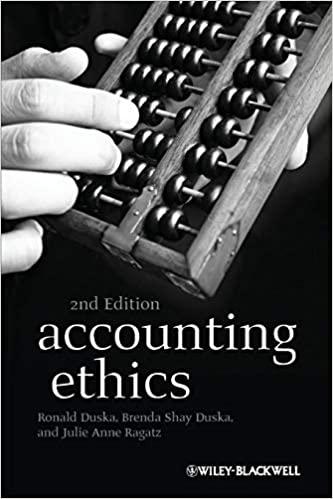For each of the following brief scenarios, assume that you are reporting on a client's financial statements. Reply as to the type(s) of opinion (per below) possible for the scenario. Will the report require a basis for opinion paragraph, an emphasis, or other language? In addition: Unless stated otherwise, assume the matter involved is material. If the problem doesn't tell you whether a misstatement pervasively misstates the financial statements or doesn't list a characteristic that indicates pervasiveness, two reports may be possible (i.e., replies 6 to 9). Do not read more into the circumstances than what is presented. Do not consider an auditor discretionary circumstance for modification of the audit report unless the situation explicitly suggests that the auditor wishes to emphasize a particular matter. . Types of Opinion a. Unmodified-standard. b. Unmodified with an emphasis-of-matter paragraph. c. Qualified d. Adverse. e. Disclaimer. f. Unmodified with an emphasis-of-matter paragraph or disclaimer. g. Qualified or adverse. h. Qualified or disclaimer. i. Adverse or disclaimer. j. Other. Answer Situation 1. A company has not followed generally accepted accounting principles in the recording of its leases. Types of Opinion a. Unmodified-standard. b. Unmodified with an emphasis-of-matter paragraph. c. Qualified. d. Adverse. e. Disclaimer f. Unmodified with an emphasis-of-matter paragraph or disclaimer. 8. Qualified or adverse. h. Qualified or disclaimer. i. Adverse or disclaimer. j. Other Situation Answer 1. A company has not followed generally accepted accounting principles in the recording of its leases. 2. A company has not followed generally accepted accounting principles in the recording of its leases. The amounts involved are immaterial. 3. A company valued its inventory at current replacement cost. Although the auditor believes that the inventory costs do approximate replacement costs, these costs do not approximate any GAAP inventory valuation method. 4. A client changed its depreciation method for production equipment from the straight-line method to the units-of-production method based on hours of utilization. The auditor concurs with the change. 5. A client changed its depreciation method for production equipment from the straight-line to a units-of-production method based on hours of utilization. The auditor does not concur with the change. 6. A client changed the depreciable life of certain assets from 10 years to 12 years. The auditor concurs with the change. 7. A client changed the depreciable life of certain assets from 10 years to 12 years. The auditor does not concur with the change. Confined to fixed assets and accumulated depreciation, the misstatements involved are not considered pervasive. entity being audited. 14. An auditor reporting on group financial statements decides not to take responsibility for the work of a component auditor who audited a 70 percent owned subsidiary and issued an unqualified opinion. The total assets and revenues of the subsidiary are 5 percent and 8 percent, respectively, of the total assets and revenues of the entity being audited. 15. An auditor was hired after year-end and was unable to observe the counting of the year-end inventory. She is unable to apply other procedures to determine whether ending inventory and related information are properly stated. 16. An auditor was hired after year-end and was unable to observe the counting of the year-end inventory. However, she was able to apply other procedures and determined that ending inventory and related information are properly stated. 17. An auditor discovered that a client made illegal political payoffs to a candidate for president of the United States. The auditor was unable to determine the amounts associated with the payoffs because of the client's inadequate record-retention policies. The client has added a note to the financial statements to describe the illegal payments and has stated that the amounts of the payments are not determinable. 18. An auditor discovered that a client made illegal political payoffs to a candidate for president of the United States. The auditor was unable to determine the amounts associated with the payoffs because of the client's inadequate record-retention policies. Although there is no likelihood that the financial statements are pervasively misstated, they may be materially misstated. The client refuses to disclose the payoffs in a note to the financial statements










